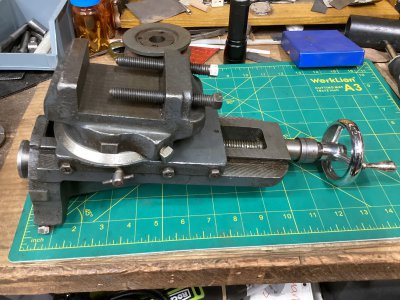I'm very pleased with the drilling capability with a drill chuck mounted in the three jaw. I'm going to make some basic round tool holders with a set screw so I don't have to mount the drill chuck and endmills directly in the chuck jaws. Seems to work for now but I'm reading they can slip in the chuck.
I have a spare Jacobs-style drill chuck that would work well chucked up in the three-jaw, except that the arbor its mounted on is a Morse taper. If I were to ever find the right sleeve for inserting MT3 centers in my spindle, I could just use the good Jacobs chuck that is currently in my tailstock. Or, I could just find a straight arbor for the other chuck. That would give me lots of versatility for drilling weird sizes for tapping holes, etc. I can see where it would particularly useful for drilling and threading the end of a shaft that is too large to go through the spindle.
I do (or will) have enough collets for standard hole sizes, probably including the tap drill size for 1/4-20, 3/8-16, and 1/2-13. These, plus sizes in the 16ths, would accommodate much of what I would need for this application. Any drilling i did on the lathe would have to turn out better than on my craptastic drill press, with its 60 thou (I'm not making this up) of runout. I have a set of cheapie HSS end mills for which have collets of one sort or another for enough of them that I could do most things. For cutting standard keyways, or milling slots, I have the sizes I need already.
Rick "but first task is milling the t-nut for my new toolpost" Denney


